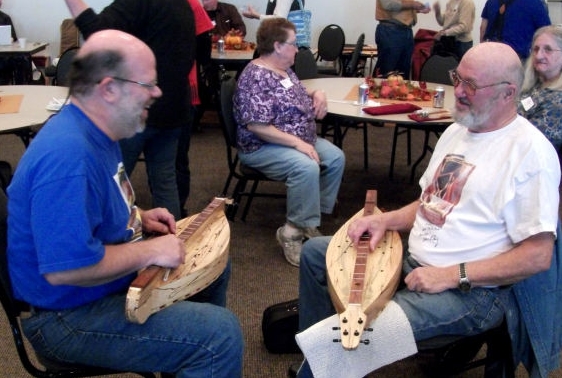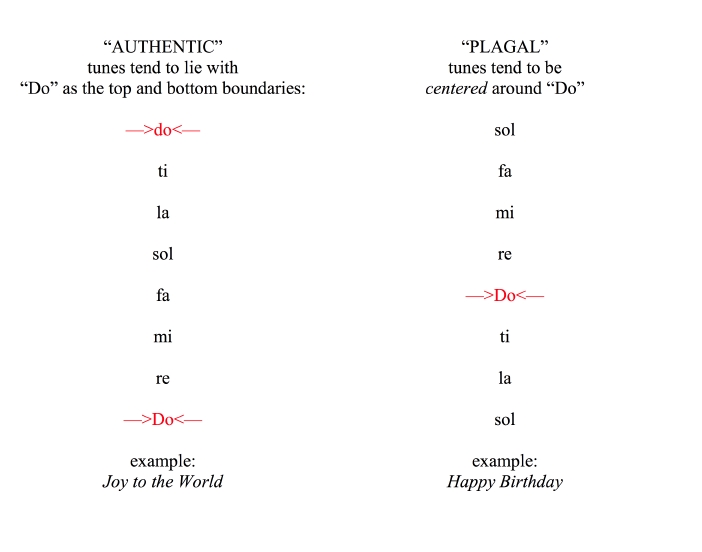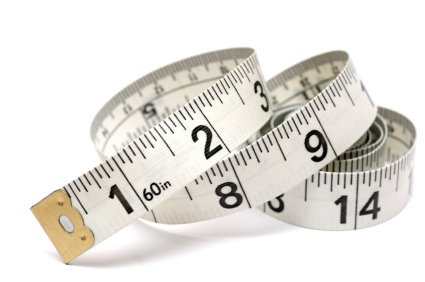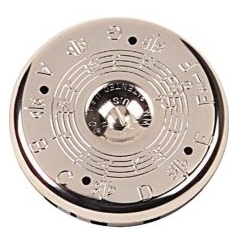Blog
Don't Miss the Bus! Back to School Special
SAVE! You don't need new school clothes if you are choosing our homeschool method of dulcimer learning at www.dulcimercrossing.com! And with our Back to School Special (Aug 24-Sept 2), you can save even more AND build your dulcimer skills!
Bridging the Gap between
what you know
and where you want
Your Music to go!
Introduction to Dulci-Bro Lessons
by Steve Eulberg Here is the introduction to the Lesson Series for Dulci-Bro at www.DulcimerCrossing.com, and several lessons have already been posted there!
Dulci-Bro: Where can I get one?
by Steve Eulberg We have begun a Lesson series on learning to play the Dulci-Bro and the natural question arises: where can I get one? Homer Ledford is credited by at least one observer as being the originator of a resonator dulcimer.
 (Alvey, R. Gerald. Dulcimer Maker: the craft of Homer Ledford. University Press of Kentucky, 2003.)
(Alvey, R. Gerald. Dulcimer Maker: the craft of Homer Ledford. University Press of Kentucky, 2003.)
 I ordered mine (many years ago) from Don Neuhauser, who quite simply, is an amazing dulcimer builder! Don is in Charlestown, Indiana. My dulci-bro is built with a…
I ordered mine (many years ago) from Don Neuhauser, who quite simply, is an amazing dulcimer builder! Don is in Charlestown, Indiana. My dulci-bro is built with a…
Why use the DAA tuning?
With mountain dulcimer, every tuning has benefits to recommend it. Every tuning also has limitations.
Someone wrote to me recently to ask why we include lessons on the DulcimerCrossing website in the DAA tuning. Here are the 4 reasons that I wrote back in response:
Technique or Repertoire?

Here is the chicken-or-egg question, regardless of whether one is a student or a teacher.
Which is more important in learning to play an instrument: Technique or Repertoire?
Both are necessary, of course, but how would you answer the question?
Perhaps one of these phrases describes you as a Student, whether you are working with a private instructor, or making workshop decisions when you attend a festival:
Student A: "Tunes! There are so many tunes! I want to learn to play them al…
Playing Authentic and Plagal Tunes
Here are two words that may be unfamiliar to you, but which I find most helpful for determining where to look to play tunes on both mountain and hammered dulcimers: Authentic and Plagal. (for more on Plagal, see below)
Authentic Tunes are those whose notes are generally found between Do and the octave do.
Plagal Tunes (in a use of the term by ethnomusicicologists) are those which are centered on Do, from Sol below Do to sol above Do. This is illustrated by the chart below:

Now ho…
Give the Gift of Dulcimer Lessons!
 Finding just the right gift for someone who plays dulcimers can be difficult because the preferred instruments and accessories are so personal. My father-in-law once said that about camera lenses when I asked to have one as a gift; and he was right! They can't be picked off of the rack—they have to be tailored to each individual.
Finding just the right gift for someone who plays dulcimers can be difficult because the preferred instruments and accessories are so personal. My father-in-law once said that about camera lenses when I asked to have one as a gift; and he was right! They can't be picked off of the rack—they have to be tailored to each individual.So here is the perfect gift: support and challenge that nurtures each individual's growing skill-set and helps them play the music they want to play, i…
String-Side Up/Absolute Beginner Lesson Series
by Steve Eulberg Congratulations! You've got a dulcimer and now you're ready to play it. And we've got a brand-new series of lessons to help you successfully meet that goal.
This String-Side Up/Absolute Beginner Hammered Dulcimer and String-Side Up/Absolute Beginner Mountain Dulcimer lessons on www.dulcimercrossing.com is designed to take you from square one in a step-by-step fashion, through sequential lessons designed to answer your questions, demonstrate and encourage best practices and …
Learning the notes on hammered dulcimer (Tuning Game)
by Steve Eulberg  People always ask me if it is necessary to read music in order to play the hammered dulcimer. My answer is always the same, "No, it is not necessary. But it can be good tool." It IS necessary to know which notes you have on your instrument in order to tune it, however. And learning that is a LOT more fun if you have a game to play to help you learn!
People always ask me if it is necessary to read music in order to play the hammered dulcimer. My answer is always the same, "No, it is not necessary. But it can be good tool." It IS necessary to know which notes you have on your instrument in order to tune it, however. And learning that is a LOT more fun if you have a game to play to help you learn!  When I first started playing hammered dulcimer, I used a vocal pitch pipe to match pitches with the strings and I found it a lo…
When I first started playing hammered dulcimer, I used a vocal pitch pipe to match pitches with the strings and I found it a lo…
Lance Frodsham Plays Epinette
by Steve Eulberg On my recent tour of the Pacific Northwest, I was able to finally meet Lance Frodsham of Vancouver, Washington. Lance is a teacher and performer of the mountain dulcimer with several recordings and books of music for dulcimers published by Mel Bay. He is also one of the coordinators of the annual Kindred Gathering (which celebrated its 37th gathering in the Pacific Northwest this past August!)  Lance and I have corresponded but had never met face to face, or had the opportunit…
Lance and I have corresponded but had never met face to face, or had the opportunit…
Categories
- News (6)
- Events (4)
- subscriber news (236)
- uncategorized (6)
- lessons (190)
- mountain dulcimer (203)
- hammered dulcimer (157)
- history (22)
- music theory (40)
- octave (1)
- plagal cadence (1)
- dulci-bro (73)
- fingerpicking (3)
- fingerstyle mountain dulcimer (4)
- nina zanetti (5)
- aeolian (2)
- dorian (4)
- ionian (3)
- lydian (1)
- mixolydian (3)
- modes (2)
- traditional (2)
- tuning (5)
- music education (2)
- NSME (1)
- standards (1)
- drone (3)
- folk alliance (1)
- jonah brody (1)
- koto (1)
- sam lee (1)
- scottish folk song (1)
- linda ratcliff (5)
- practice (29)
- chromatic mountain dulcimer (66)
- dulcimercrossing.com (2)
- erin rogers (7)
- building (8)
- black mountain (1)
- jerry read smith (1)
- Joshua Messick (1)
- song of the wood (1)
- don pedi (5)
- fiddle whamdiddle (9)
- miss mcleod (2)
- steve eulberg (30)
- vi wickam (9)
- buying (1)
- choosing (1)
- purchasing (1)
- orphan girl (1)
- copyright (1)
- amplification (2)
- contact pickup (1)
- eulberg (4)
- microphone (2)
- pickup (2)
- berkeley (1)
- colorado (2)
- festivals (4)
- kentucky (1)
- scholarship (1)
- western carolina (1)
- noter (2)
- clubfooted jib (1)
- dgd (2)
- dgd tuning (1)
- special event (31)
- david massengill (2)
- reverse ionian (1)
- chuck boody (1)
- concertina (1)
- deedee tibbits (1)
- dulcimer (7)
- evart (1)
- evart funfest (1)
- linda foley (1)
- michigan (1)
- original dulcimer players club (1)
- fingerstyle (11)
- gebhard woods (1)
- technique (1)
- harmonics (1)
- dan delancey (2)
- june apple (1)
- linda thomas (3)
- modal (1)
- expression (1)
- playing expressively (1)
- dulcimer pledge (1)
- christmas (2)
- nativity (1)
- DAC (2)
- minor more (1)
- mississippi sawyer (1)
- holiday (5)
- joy to the world (1)
- jingle bells (1)
- reverse ionion (1)
- hand independence (1)
- hand separation (1)
- lullabye of muffe (1)
- tina gugeler (1)
- absolute beginner mountain dulcimer (1)
- beginner (2)
- mountain (3)
- string-side up (1)
- absolute beginner hammered dulcimer (1)
- blog (2)
- dulcimercrossing. (1)
- topics (1)
- blues (4)
- resonator (4)
- dulcimer orchestra (2)
- kitty puss (1)
- mike clemmer (1)
- noter style (2)
- jam survival (7)
- butch ross (3)
- looping (1)
- intro (4)
- neal hellman (4)
- erin mae lewis (9)
- rehearsal (3)
- italian (1)
- lauda (1)
- irish (1)
- slipjig (1)
- rhythm (2)
- robert force (2)
- tuner (1)
- exercises (1)
- scales (1)
- devotions (3)
- hark advent (1)
- the glad sound! (1)
- chords (3)
- chromatic (4)
- erin (1)
- theory (7)
- advent (5)
- preparation (4)
- stir up (1)
- appalachia (4)
- hillbilly (1)
- mountains (1)
- traditional music (1)
- dampers (1)
- hearts of the dulcimer (3)
- patricia delich (2)
- wayne jiang (2)
- appalachian (1)
- John Jacob Niles (1)
- Live Events (28)
- Premium Level Membership (2)
- habits from the muse (1)
- progress (6)
- support (2)
- Anna Muckova (1)
- cimbalom (1)
- CWA (1)
- Czech Republic (1)
- Magdalena Muckova (1)
- nonsuch (1)
- Slovak Republic (1)
- podcast (1)
- aubrey atwater (2)
- jean ritchie (2)
- log-in (1)
- update (1)
- lucky (1)
- performance (9)
- preparing (1)
- study (1)
- dulcimers (1)
- wendy songe (2)
- bluegrass (2)
- growth (1)
- resolutions (2)
- risks (1)
- capo (1)
- snark (1)
- fiddle (61)
- criticism (2)
- judy klinkhammer (1)
- miles davis (2)
- wrong note (1)
- live and let live (1)
- style (1)
- barlow knife (1)
- old school old-time (2)
- marie kirby (1)
- bass mountain dulcimer (1)
- elaine conger (1)
- larry conger (1)
- practice smarter (8)
- musical journey (1)
- piano (1)
- calm (1)
- dog (1)
- su la li (1)
- bluebird cafe (1)
- inspiration (3)
- new input (2)
- trust (1)
- practice space (2)
- quite (1)
- how to practice (8)
- you are what you practice (1)
- workshop (5)
- rich chords (2)
- kaitlin pabo-eulberg (1)
- hooked on dulcimers (1)
- humor (1)
- blue water thinking (1)
- creativity (2)
- environment (2)
- original tunes (1)
- 1+ fret (1)
- chopin (1)
- classical (1)
- assessment (1)
- skill levels (1)
- waltz (1)
- caledonian club (1)
- ensemble (1)
- group (1)
- dulci-tune (1)
- tuning game (1)
- love (2)
- workout (1)
- learning (8)
- teacher (6)
- self-taught (1)
- how long (1)
- jam sessions (6)
- learn to play (1)
- strategies (2)
- fariña (1)
- mimi (1)
- pete seeger (2)
- rainbow quest (2)
- goals (1)
- planning (1)
- backing tracks (6)
- matthew dickerson (2)
- concert (1)
- erin mae (2)
- guitar (5)
- deborah hamouris (3)
- dj (2)
- freight and salvage (1)
- classic (1)
- licks (1)
- rock (1)
- berkeley dulcimer orchestra (1)
- premiere (1)
- banjo (1)
- frank proffitt (1)
- frank warner (1)
- tom dooley (1)
- baker (1)
- binding (1)
- blue lion (1)
- bob (1)
- gluing (1)
- janita (1)
- live (1)
- tips (1)
- spouse (1)
- amplified (1)
- DI box (1)
- digital interface (1)
- sound reinforcement (1)
- 2nd Set Concert (2)
- contest (1)
- flash mountain dulcimer brigade (2)
- JimJim & the FatBoys (1)
- Pecan Grove (1)
- walnut valley festival (2)
- winfield (1)
- wvfest (1)
- thinking (1)
- case (1)
- cross-legged (1)
- grip (1)
- safe dulcimer (1)
- sit (1)
- slip (1)
- stand (1)
- stool (1)
- strap (1)
- learn (3)
- mistakes (1)
- successes (2)
- herbie hancock (1)
- improvising (1)
- jazz (2)
- lois hornbostel (2)
- wrong chord (1)
- atlantic (1)
- barbara allen (1)
- frank profitt (1)
- scots-irish (1)
- chord wizard (1)
- diatonic (2)
- equi-distant (3)
- tom strothers (1)
- tool (2)
- busker (1)
- tsimbaly (1)
- ukraine (1)
- ukrainian (1)
- calendar (1)
- schedule (1)
- baritone (1)
- concert window (3)
- katie moritz (1)
- faq (1)
- frequently asked questions (1)
- logged in (1)
- navigation (1)
- old time (1)
- patreon (1)
- shape-note (1)
- special (1)
- carrell (1)
- geoff reeve-black (1)
- malvern (1)
- presnell (1)
- articulations (1)
- chicken reel (1)
- conger (1)
- soldier's joy (1)
- basic level membership (1)
- caring for your instrument (1)
- winter weather (1)
- god rest ye (1)
- rhythmic displacement (1)
- builder (1)
- tam kearney (1)
- toronto (1)
- don neuhauser (1)
- slide (1)
- ashley ernst (1)
- dan and angie landrum (1)
- dpn (1)
- dulcimer players news (1)
- dulcimersessions.com (1)
- maddie macneil (1)
- arkansas traveler (1)
- Mark Alan Wade (2)
- 3d playing (1)
- playing across the strings (2)
- chord symbols (1)
- understanding chords (3)
- dulcimer club (1)
- class (1)
- habits (1)
- skills (1)
- jimmy driftwood (1)
- failures (1)
- hours (1)
- youtube (1)
- arranging (1)
- bill robinson (1)
- cold winter night (1)
- karen mueller (3)
- jig (1)
- DAd tuning (1)
- hyfrydol (1)
- hymn (1)
- 2020 (1)
- premium (1)
- gounod (1)
- hitchcock (1)
- dan evans (1)
- spotted pony (2)
- steveeulberg (1)
- nylon-string (1)
- stephens lutherie (1)
- musical devotions (1)
- award (1)
- fernando sor (1)
- hammered (1)
- understanding (1)
- lent (1)
- leap forward (1)
- power of music (2)
- News (10)
- Events (4)
- mountain dulcimer (147)
- hammered dulcimer (151)
- chromatic mountain dulcimer (8)
- sharing (1)
- persistence (5)
- Practice (4)
- routine (1)
- tour (1)
- new website (1)
- arrranging (1)
- celtic (1)
- single jig (1)
- mountain dulcimer (3)
- busking (1)
- audio (1)
- playback (1)
- protection (1)
- adaptations (1)
- dulcimer acquisition syndrome (1)
- dulcimer acquisition disease (1)
- contests (1)
- lessons (1)
- identify (1)
- apps (1)
- motivation (1)
- hands (1)
- In Memoriam (1)
- guitar (1)
- archive (1)
- concerts (1)
- mountain dulcimer (2)
- hammered dulcimer (1)
- lessons (1)
- workshops (1)
- self-assessment (1)
- learn (1)
- greek (1)
- mindset (3)
- accountability (2)
- encouragement (1)
- prodding (1)

